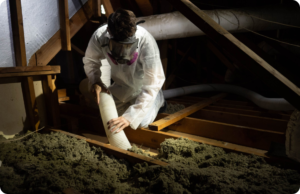Plastic Molds are used to shape and create the plastic products you use every day. These include water bottles, toys and even cars.
With family injection molding you can produce several parts at once by creating one mold. This is ideal for low-volume orders, where reducing cycle times and improving production efficiency is key. Contact American Plastic Molds now!

Extrusion moulding is a process for creating plastic products with consistent cross-sectional profiles. It’s used in a variety of applications and is one of the most popular types of plastic molding. However, there are several important steps that need to be taken into consideration when using this process.
The First Step: Heating Up
The plastic pellets used in extrusion moulding are heated until they reach their ideal melting point. The temperature required depends on the type of plastic being molded and the desired end-use application. For example, polystyrene is rigid and brittle, making it suitable for products that don’t require flexibility, while polyethylene offers high strength and resistance to chemicals.
Next, the molten plastic is pushed through a die–a mold that shapes the final product. This step is a bit like squeezing playdough through a shape-maker. The shape of the die determines whether you’re producing a tube, rod, or sheet. The melted plastic is then cooled down to solidify its new form. This allows the plastic to be cut into lengths and used as needed.
Plastic additives can also be added to the molten plastic during the extrusion process. These can improve the appearance of the finished product, add functionality, or increase durability. Some of the most common additives include UV stabilizers to protect against sun damage, colorants to modify color, plasticizers to increase flexibility, and flame retardants to enhance fire resistance.
As the world struggles to reduce its dependence on plastic waste, sustainable practices are becoming increasingly prevalent in the plastics industry. From recycling to the use of bioplastics, these changes are expected to increase efficiency and quality while reducing environmental impact.
Rotary Moulding
Rotational molding is a low-pressure and high-temperature process that uses hollow molds. This allows designers to create complex and unique shapes, with a uniform wall thickness and no size limitations. The resulting product is very lightweight and strong, with excellent durability. This makes it ideal for outdoor equipment and playgrounds, as well as toys, containers, and sports gear.
In the rotary moulding process, powdered plastic resin is loaded into a hollow, closed mold. The mold is then rotated slowly on two axes. This allows the polymer to melt and ‘lay-up’ evenly on all surfaces of the mold. Once the melted plastic has completely fused with the mold surface, the mold is moved to a cooling station. During the cooling cycle, the polymer shrinks and contracts. This allows the operator to easily remove the finished plastic from the mold.
The rotational molding process is most commonly used with linear low-density (low-molding point) polyethylene, which offers good resistance to stress and impact. It is also possible to use polypropylene, which has a higher melting point and better resistance to oxidation.
Another common type of rotary molder is the shuttle-type machine, which consists of a frame that holds one mold on a movable bed, which can be moved into and out of an oven. This type of rotary molder is particularly useful for large, hollow plastic parts such as boats and canoes.
For more complicated products that require a unique product orientation, a vertical rotary molder is also available. This type of rotary machine rotates the molds around a vertical axis, which allows the resin to be distributed and fused evenly on all surfaces of the mold cavity walls.
In-mold decorating is an important feature of rotary molding that can add a lot of value to your final product. In-mold labeling can be added to create a fully functional and aesthetic plastic product, with information like bar codes, serial numbers, logos, and more. In addition, rotomolded products can be made with a variety of textures and finishes, including wood grains, marble, and more. Often, these textures are molded directly into the finished plastic product, which provides added visual appeal and is more durable than traditional labels.
Continuous Moulding
Continuous moulding involves a long process that takes place in the same way as extrusion, but produces thicker plastic. It is a great method for making long, hollow shapes like car parts or bins. It is also a good choice for projects that require high-volume production. It starts with plastic polymer pellets or granules being fed into the main barrel of the extrusion machine, which is heated by rotating screws. The molten plastic then goes through the die, which is custom made to create the desired shape for the product.
After the molten material has passed through the die, it is cooled with water sprays or air mists in the secondary cooling zone. This helps to ensure that the strand of graphite solidifies evenly without any flaws or defects. This step is particularly important, since inadequate cooling can lead to poor quality.
A starter bar is positioned at the bottom of the continuous casting system, which helps to provide a solid surface for the metal to adhere to initially. This helps to prevent the molten material from sticking to the mold walls and creating surface imperfections. It is also beneficial for reducing the energy consumed by the process by preventing wasteful heating and cooling.
The molten material then flows out of the continuous casting system through a gate that is placed at the entrance of each runner. The gates can be of various sizes to accommodate the different needs of each project. The molten material can then be withdrawn from the bottom of the continuous casting system at a rate that maintains the interface between the solid and liquid states. The withdrawal process is essential for maintaining the integrity of the strand of graphite.
Graphite is ideal for this process because it has a low coefficient of thermal expansion, which allows it to expand at a slow rate. This prevents the graphite from becoming stuck to the mold walls, a problem that can occur with other materials. It is also self-lubricating, which reduces friction between the strand and the mold. In addition, it can be reshaped and repositioned if necessary.
Hot Melt Moulding
Hot melts work like glues but are melted and extruded directly onto the surface. This process allows for a high degree of accuracy and consistency and eliminates the need for water or solvents, which can cause tainting on substrates. This makes the application process quick and easy for manufacturers, allowing them to get their product on the market more quickly.
Special dispensing equipment is used for metering the hot melt and ensuring that it solidifies correctly in order to maintain its adhesion properties. Typical polymers for hot melt adhesives are styrene-isoprene-styrene (SIS) or styrene-butadiene-styrene (SBS), and EVA. Other types of hot melts include amorphous and metallocene polyolefins, ethylene vinyl acetate, and polyamides (PA).
The main components of a hot melt are the base polymer, plasticizers, and tackifiers. The base polymer provides the inherent strength and chemical resistance, while the plasticizers help to modify the melting point of the adhesive, as well as provide the desired viscosity. The tackifiers help to improve the initial adhesion between the two surfaces and can be either an oil or wax.
The VCM screen allows the mg-to-g scale screening of new formulations for hot-melt extrusion, which helps to optimise the raw materials and processing parameters. Typically, the raw materials are powdered and mixed with a hot melt or a tackifier. Then the mixture is fed into a heated VCM Tool and under vacuum, the powder is compacted, preventing bubbles and achieving rapid melting. The tackifier is then added to the molten adhesive in order to improve its tack and swell time.
HECHT + DIEPER realized the tight encapsulation of an antenna inductor in a plastic carrier plate with the hotmelt adhesive Macromelt. This thermal potting material is a cost-effective alternative to traditional polyurethane or epoxy resin-based potting compounds, because it can be processed at significantly lower injection pressure. This also means that electronic components can be overmolded without damaging them.
HMPAs for Low-Pressure Molding offer good mechanical properties, such as heat and cold resistance, and excellent laundry resistance and stain removal. They are also flame retardant, meeting the requirements of UL94 V0. In addition, the thermoplastic property of HMPAs enables them to be remelted and recycled for repeated use.








